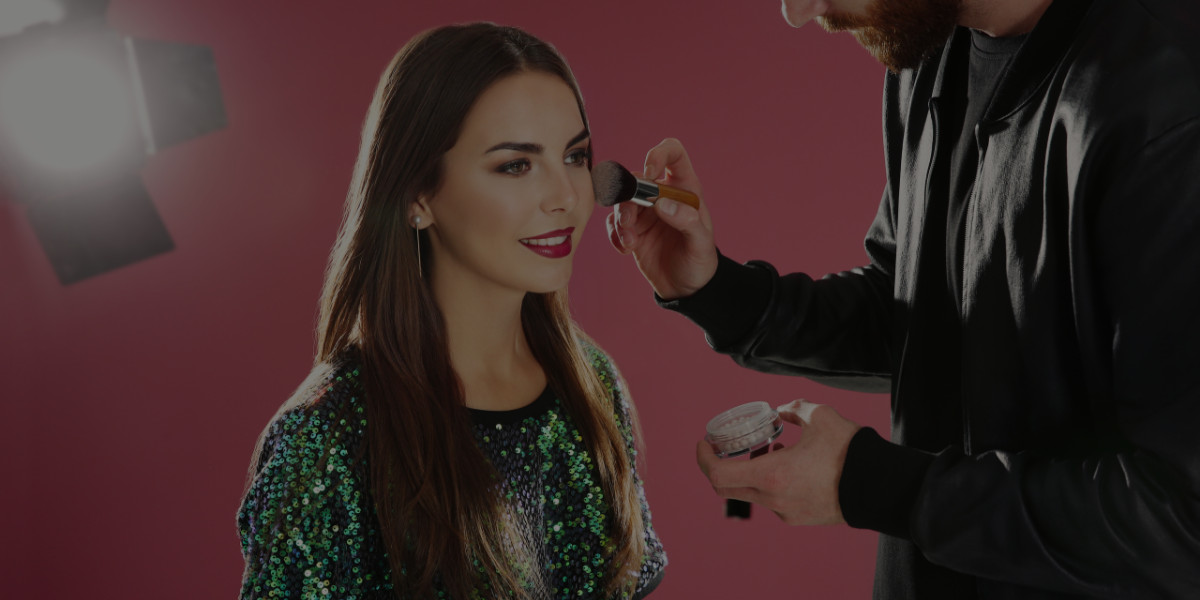Imagine spending years designing and building a beautiful house… and then furnishing it with mismatched old tattered furniture. The structure is perfect, but the insides let you down.
Many artists make this very mistake with their portfolio: they spend hours designing a beautiful website, but then forget about the actual work samples that go into it.
Don’t get me wrong… having a makeup artistry portfolio that’s visually appealing and easy to navigate is very important. Just don’t forget that the contents of that portfolio is truly where the rubber hits the road.
If you’re a makeup artist, you probably have an area of focus. One type of makeup you want to be known for. That area of focus could be high fashion makeup, everyday makeup, bridal makeup, etc. Whatever your focus, make sure it’s reflected in your portfolio. If you’re advertising your bridal makeup services, for example, images of theatre makeup won’t help you get clients. Using pictures of beautiful bridal looks, on the other hand, will.
Only the best will do
When building your portfolio, be ultra-critical of your work. Potential clients will use this to judge your abilities, and you don’t want to give them any reason to go look for another source.
So, not all work samples should go into your portfolio. You might work on 10 different looks or take 100 different pictures to find the one that’s truly “portfolio-worthy”.
If you’re enrolled in a makeup artistry course, consider consulting with your tutor on which samples of work they believe should be included in your portfolio. These are seasoned professionals with years of experience, and they can give you invaluable advice when it comes to putting your best foot forward.
Be honest
Never ever take credit for someone else’s work. It’ll come back to bite you in the end. It’s okay to include a piece in your portfolio if you assisted in its creation, but make sure you indicate what your specific role was.
Proofread… then do it again
I can’t tell you how many portfolios I’ve seen with blatant spelling or grammatical errors. This is a sure-fire way to kiss some clients goodbye.
Even though spelling and grammar skills have nothing to do with makeup skills… it’s a testament to your professionalism. Think about it: If someone is willing to publish a piece that contains those kinds of mistakes, how careful are they truly going to be when applying a client’s makeup?
Although you may not have much text in your portfolio, take some time to make sure your spelling and grammar are correct in your title and descriptions. If this isn’t your strong suit, get someone else to look it over.
Pro Tip: Please don’t rely on a mechanical “spell check”. A pair of human eyes will catch errors that a computer will miss, guaranteed. Having another person (or several people) read over your portfolio is the best way to go!
Keep it current
You should always keep updating your portfolio with recent work. As your portfolio grows, consider also removing some of your older or dated work samples and replacing them with more current ones. Having a higher proportion of recent work in your portfolio helps demonstrate that your skills are current.
You should be online
It’s not uncommon to have a printed portfolio, but these days you’ll really need to have an online one as well. You don’t have to be a web designer for this: you can easily find cheap online templates that you can use if you don’t have the technical skills.
This quick guide on building your website might help…
If this is over your head (don’t feel bad, it happens!), you can get help from a local web designer. Maybe offer her a makeover in exchange for her design services? Just a thought!
Now you’re probably thinking “What have I gotten myself into!? This is sooooo much work!!!” Well, the best things often are. But remember you’re building something that will help you launch your career to new and exciting heights!

the course looks good .
Thanks Julia for writing this! It’s useful, current and well written. Please write more! Maybe even re-write some course materials? Thank you again!
Great article Julia, just one thing; you mention building an online portfolio, but nothing else. Do you have any suggestions for possible, easy-to-use DIY websites? What content should we include (i.e. ‘About Me’, ‘Contact Details’ etc etc)? Should we have separate pages within the website that shows our different skills (Different looks, as mentioned in your article)? What should we avoid?
Thanks,
Jayde
Hi Jayde!
If you’re building a business website where you’ll feature your portfolio (which you should!) then yes you should have all the elements of a traditional website (homepage, about page, contact details, etc.).
You can also think about separating the portfolio into “themes” so that users can easily find images/looks that they’re most interested in. This can either be done by separating the portfolio on different web pages or simply tagging your photos to allow users to easily find what they’re looking for. When you’re working on your online presence, remember the one golden rule: be user friendly! If your site is difficult to use or confusing to navigate, you’ve already lost the visitor.
For more information on website design you can read this post:
Hope this helps!
-Mireille